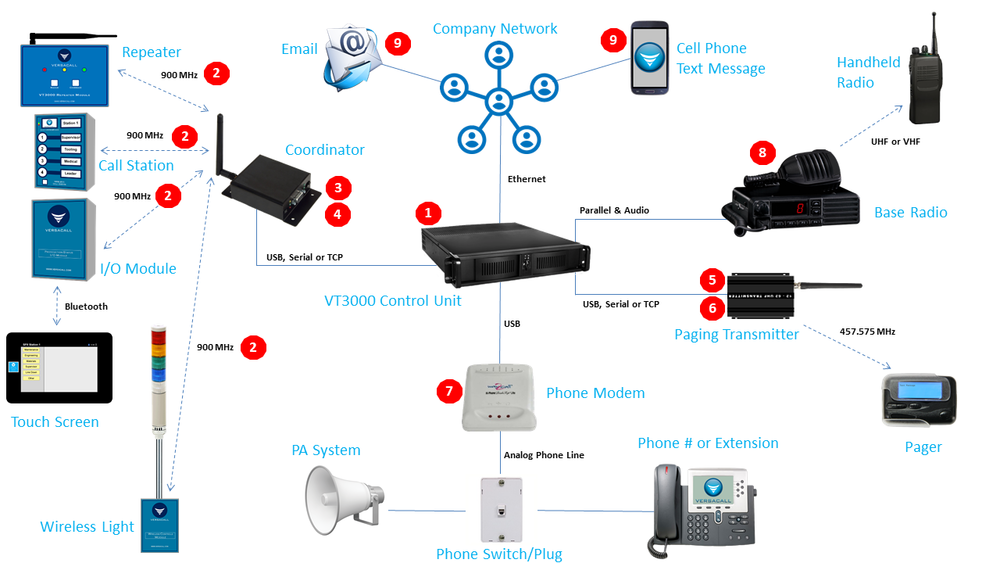VT3000 - IT Considerations
Jump to navigation
Jump to search

|

|

|
Overview
|
| Diagram
|
What Is the VersaCall (VT3000) System
|
1. Control Unit
|
2. Mesh Network
|
3. USB Coordinator
|
4. Remote/Ethernet Coordinator
|
5. USB Paging Transmitter
|
6. Remote/Ethernet Paging Transmitter
|
7. Phone Modem
|
8. 2-Way Radio
|
9. Email & Text Messages
|
|
|

|




